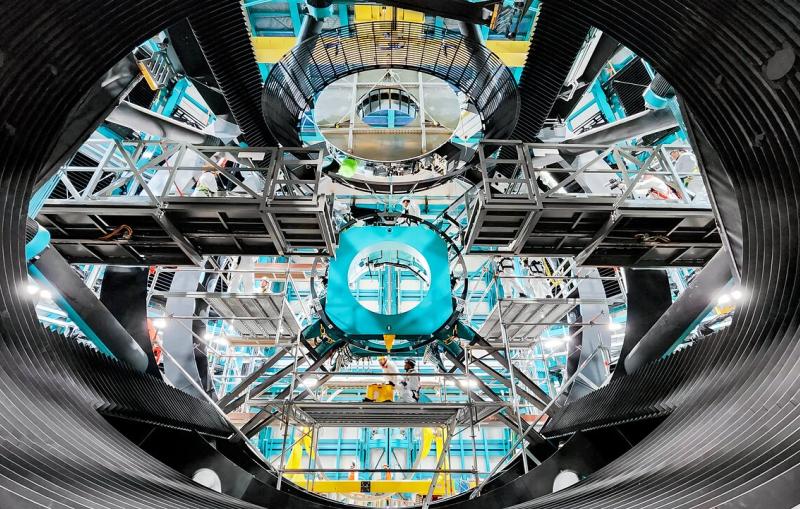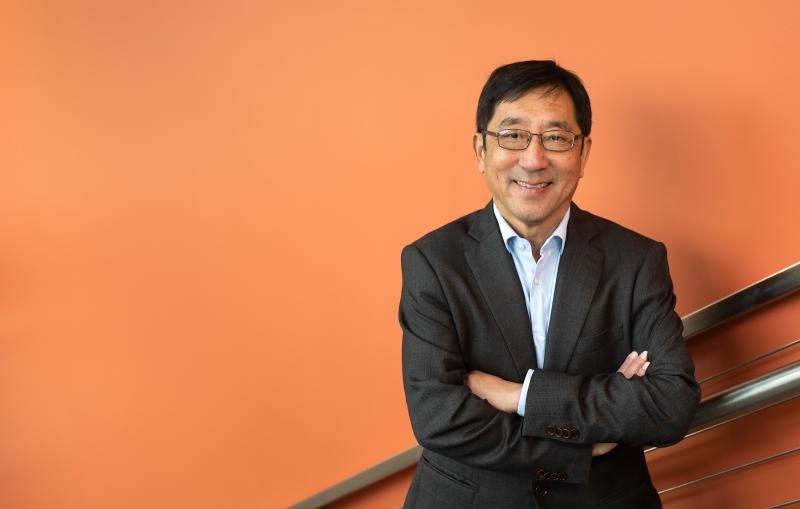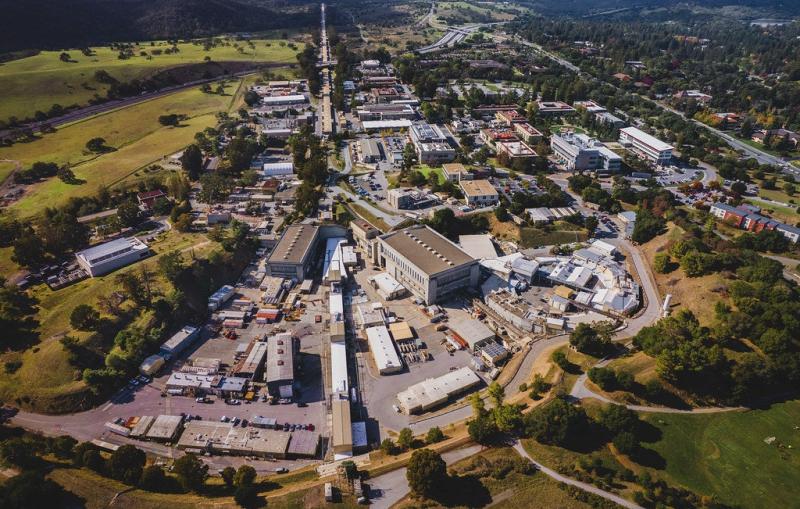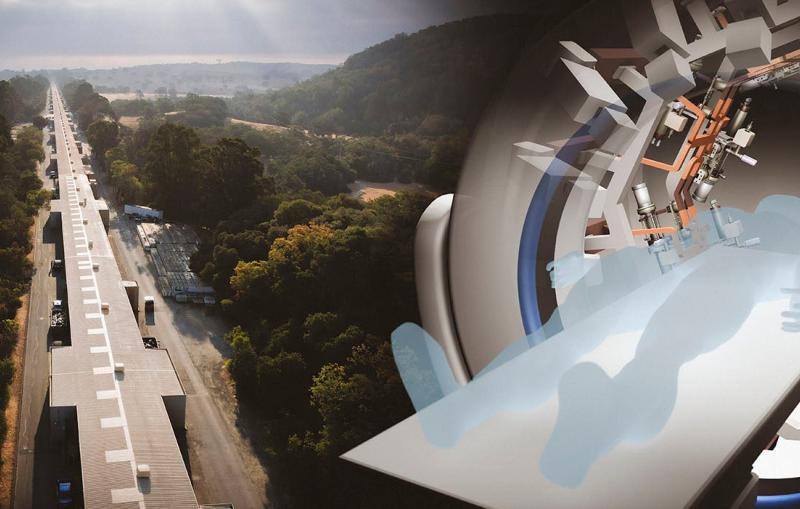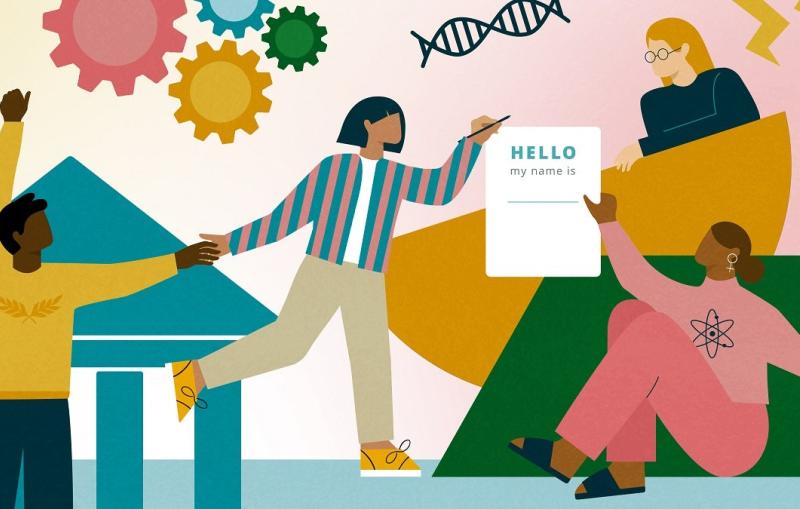Q&A: How SLAC's Technology Innovation Directorate serves as the backbone of discovery at the lab
The leaders of SLAC's Technology Innovation Directorate discuss how their group supports the lab's most innovative projects.
By Kimberly Hickok
Behind every remarkable scientific discovery is a wealth of prior innovation, research and support as the building blocks of that breakthrough. At the Department of Energy’s SLAC National Accelerator Laboratory, those building blocks are often put in place by members of the Technology Innovation Directorate (TID).
TID's scientists and engineers research and develop technology for nearly every area of SLAC science – whether it's helping develop the next-generation particle accelerator or enabling powerful computational infrastructure to crunch “Big Data” – and further the lab’s scientific mission.
In this Q&A, interim TID Associate Lab Director Lisa Bonetti and her division directors Amedeo Perazzo, Ryan Herbst and Mark Kemp explain their roles at SLAC and tell us about some of the projects their teams are working on.
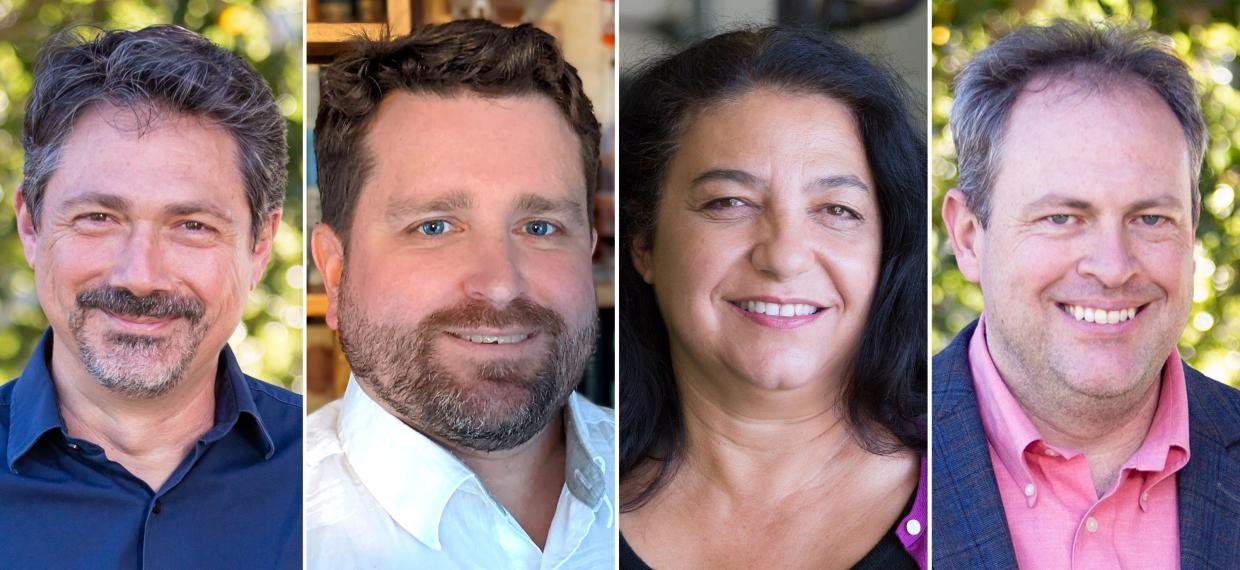
What kind of work does TID do?
Bonetti: Our mission is evolving pretty quickly, which is great and exciting. We both conduct our own research and development, and support some of the lab’s biggest science missions.
TID is a fairly young organization. With strong support from SLAC management, it was stood up in 2015 by Michael Fazio, TID’s first director. His vision was to create an entity where key capabilities required broadly across the lab and the DOE are brought under one roof and nurtured, while encouraging an entrepreneurial mindset that enables growth and development by attracting non-traditional partnerships and funding. Mike Pivovaroff, TID’s second director, further sharpened our focus and organization, which are needed to successfully manage projects, and he also added new areas, like scientific computing, to TID’s research portfolio. As interim director, I am excited to keep this vision alive by further growing our partnerships and cementing the process developed over the last years.
Perazzo: The goal of the Controls and Data Systems division is to provide all the computing infrastructure, software and hardware, that is needed by SLAC scientists. We focus on SLAC's experimental efforts, such as the next-generation LCLS-II X-ray laser, the science that will be done with the future Vera Rubin Observatory, the cryogenic electron microscopy facility (Cryo-EM), and the Ultrafast Electron Diffraction Instrument (UED).
Herbst: The Instrumentation division provides engineering design services to the laboratory. That encompasses everything from front-end sensors and circuits to digital design and data processing. We also have an assembly and test department, which is responsible for assembling the circuit boards.
Kemp: In the RF Accelerator Research division, our work spans everywhere from concept all the way through full system integration using TID-built hardware, including klystrons, modulators, linacs, and control systems. These systems are now being integrated and many will be partially validated at one of SLAC’s test areas, the Next Linear Collider Test Accelerator. For example, we're working with our partners on developing an accelerator system that has a wide variety of applications, including cargo and vehicle inspection.
We also fabricate and test components that go into our main accelerators and provide simulation and physics support.
Tell me about TID's work on the SLAC shared data facility.
Bonetti: One of the big things that we've done over the last year is consolidate all the lab's data processing and analytics into what's called S3DF, a SLAC shared data facility currently under construction. This facility will make sure that we can perform all of the massive scale data analytics we need to get science out of our user facilities and our big flagship experiments.
Perazzo: The S3DF project is something that has been close to my heart for a long time. The idea is to finally consolidate all the computing clusters that we have at SLAC into one larger, significantly more capable infrastructure than anything that we have done in the past. We're also tackling the deployment of a new tape staging system which, especially with the arrival of the Rubin Observatory, will be critical for providing archiving and backup capabilities for all SLAC experimental data.
What kind of work is TID doing with LCLS-II?
Herbst: One of the things that our division was recently responsible for deploying was the high-performance, low-latency control systems on LCLS-II. So that included the timing system in conjunction with Amedeo's group, the RF distribution system, the machine protection system, the beam positioning system – where they can basically see where the beam is in the pipe – as well as a few other peripheral instrumentation designs.
And that has been very successful. We are also in the process of deploying a high-performance RF-based (HPRF) readout system for Simons Observatory, which is a radio astronomy telescope that's under construction in Chile. And we recently finished up work for the LSST project at the Vera Rubin Observatory. We were in charge of designing and assembling the various electronic components used for powering and controlling the main camera as well as related systems.
Kemp: For the LCLS-II project, RFAR has managed the design and installation of the HPRF systems. This involves many technical aspects, from the design of the non-ionizing radiation protection system to the design and installation of complex waveguide networks. For the copper linac, we manufacture and test the high-power klystrons which power the linac. This is in addition to many RF subsystem projects.
Perazzo: Among the LCLS-II projects my organization has worked on, I’d like to highlight the design and implementation of the next generation, 1-MHz capable, timing system and the data reduction pipeline (DRP). The event timing system represents the synchronization backbone of the entire LCLS. All facility components, from the accelerator, the transport tunnels, the undulator, to the experimental areas, which require syncing up to the pulse, depend on it. The DRP will be instrumental to the success of LCLS-II and its high-energy upgrade by reducing by one or more orders of magnitude the multi-terabytes per second data throughput generated by the next generation detectors, through vetoing, compression, and feature extraction.
What are some of the other cool projects you're working on?
Bonetti: SLAC is also involved with one of the Department of Energy's quantum science centers, called Q-NEXT. It's a partnership between SLAC, DOE’s Argonne National Lab, Stanford University and a bunch of industrial partners. One of the major parts of SLAC's contribution to Q-NEXT is creating the Detector Microfabrication Facility, a facility to help make devices and structures to advance quantum information science goals.
Kemp: Several of our larger projects have to do with taking what we've learned over the years about how to design these big things, such as SLAC’s two-mile-long accelerator, and apply them to the small things. For example, we're developing portable accelerators for a variety of applications, such as for radiography or for medical applications. We have several different projects right now that are developing accelerators that could be carried by a person, which could be applied to medicine, communications and manufacturing.
What makes you excited to work in TID?
Bonetti: The thing that motivates me is coming to work every day to work with everyone in TID and support them in doing the science and the technology development that they're passionate about. It's helping people feel excited being part of research and development by doing the work that they want to do, which is the reason they came to SLAC in the first place.
Kemp: This is a big cliche, but one of the biggest strengths of our division are the people within it. Being around these great, creative people all the time really pushes all of us to be at the top of our game.
Herbst: I really enjoy the work atmosphere – the fast-paced energy, working on early technology and technologically advanced designs in a small team environment. Because we work hand in hand with the instrument scientists and the physicists we get to learn so many new things along the way as we're trying to support their vision and their scientific goals.
What else should people know about TID?
Bonetti: So much of what TID does is at the heart the really amazing science that's being done at SLAC. Sometimes we're leading that science, but a lot of times, we're making sure that the instruments or experiments are performing as needed to collect the data that leads to that breakthrough discovery.
Herbst: I think the main thing is just that people know that we are a multidisciplinary group. We're here to support all of SLAC and use our diverse engineering knowledge to bridge the gap between early experimentation and a deployable system that can run for many years.
Perazzo: Our group develops data management capabilities and hardware infrastructure to provide a holistic data processing system which integrates sensors and front end electronics in the experimental area, with on-the-fly data monitoring and data reduction fabric, and with complex and configurable processing capabilities in the data center, onsite and remote. This integration across the various layers of the data pipeline is our core expertise.
Kemp: People may not realize that the accelerator technology and the research done here at SLAC has major impacts on many. All of the technologies that go into this research have impact in areas such as national security or even communications.
Large parts of the research described in this article are funded by DOE’s Office of Science. SLAC’s instrument for ultrafast electron diffraction (MeV-UED) is part of LCLS, an Office of Science user facility.
For questions or comments, contact the SLAC Office of Communications at communications@slac.stanford.edu.
SLAC is a vibrant multiprogram laboratory that explores how the universe works at the biggest, smallest and fastest scales and invents powerful tools used by scientists around the globe. With research spanning particle physics, astrophysics and cosmology, materials, chemistry, bio- and energy sciences and scientific computing, we help solve real-world problems and advance the interests of the nation.
SLAC is operated by Stanford University for the U.S. Department of Energy’s Office of Science. The Office of Science is the single largest supporter of basic research in the physical sciences in the United States and is working to address some of the most pressing challenges of our time.
